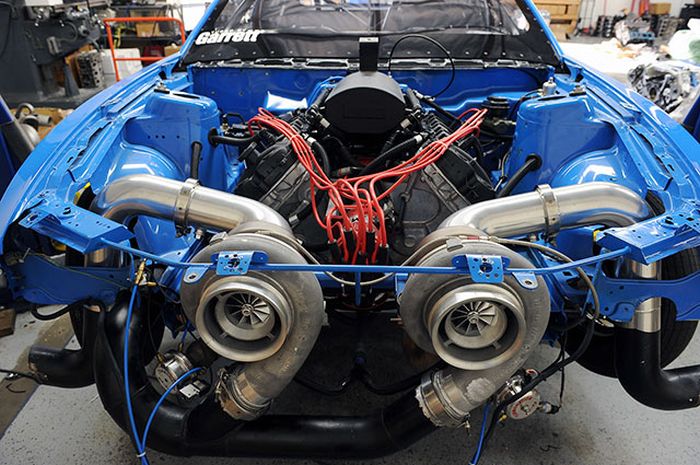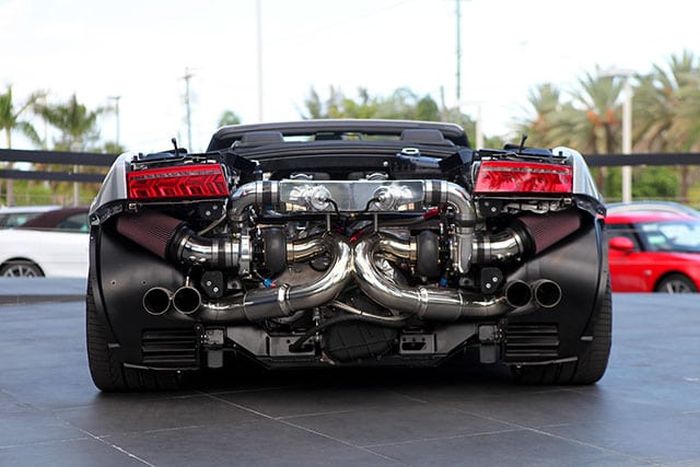Twin-turbo sports cars represent the pinnacle of automotive engineering, combining power and efficiency in a way that captivates driving enthusiasts. These vehicles utilize twin-turbo engines, which enhance performance by forcing more air into the combustion chamber, resulting in greater power output. While the concept may seem modern, the journey of twin-turbo technology spans decades, evolving from niche applications to mainstream sports cars that dominate the roads today.
With a significant advantage over naturally aspirated engines, twin-turbo systems deliver impressive torque at lower RPMs, making them a favored choice for sports car manufacturers. From remarkable acceleration to thrilling sound dynamics, twin-turbo sports cars promise an exhilarating driving experience that continues to attract a passionate community of car lovers.
Overview of Twin-Turbo Sports Cars
Twin-turbo sports cars represent a significant evolution in automotive engineering, harnessing the power of two turbochargers to enhance performance and efficiency. These engines utilize forced induction to increase air intake, optimizing combustion and delivering superior output compared to naturally aspirated engines. The historical development of twin-turbo technology has roots in motorsport, where efficiency and speed are paramount, leading to its adoption in high-performance road cars.
The advantages of twin-turbo systems are apparent. They provide increased power without a significant increase in engine size, improving fuel efficiency while delivering rapid acceleration. This makes twin-turbo engines particularly appealing to both manufacturers and enthusiasts alike, as they can achieve high performance with a lightweight design.
Popular Twin-Turbo Sports Car Models

Several twin-turbo sports car models have gained prominence in the market, showcasing the capabilities and appeal of this technology. Notable examples include:
- Nissan GT-R: Renowned for its advanced all-wheel-drive system and 3.8-liter twin-turbo V6 engine, it boasts a staggering 565 horsepower and can accelerate from 0-60 mph in just 2.9 seconds.
- Porsche 911 Turbo S: This iconic model features a 3.8-liter twin-turbo flat-six engine, delivering 640 horsepower and 0-60 mph in 2.6 seconds, combining luxury with exceptional performance.
- Ford Mustang Shelby GT500: Equipped with a supercharged 5.2-liter V8 engine, it harnesses twin-turbo efficiency to produce 760 horsepower, achieving impressive acceleration and top speeds.
These vehicles are distinguished not only by their powertrains but also by unique design features such as aerodynamic bodywork, advanced suspension systems, and technology-rich interiors that enhance both driving experience and comfort.
Performance Characteristics
Twin-turbo sports cars excel in both acceleration and speed, often outperforming their naturally aspirated counterparts. Their ability to deliver power in a controlled manner allows for rapid acceleration, with many models achieving remarkable 0-60 mph times.
The handling dynamics of twin-turbo vehicles also stand out. Compared to single-turbo and naturally aspirated vehicles, twin-turbo engines provide a more linear power delivery, enhancing stability and driver control. Below is a table showcasing the 0-60 mph times of various twin-turbo sports cars:
| Model | 0-60 mph Time |
|---|---|
| Nissan GT-R | 2.9 seconds |
| Porsche 911 Turbo S | 2.6 seconds |
| Ford Mustang Shelby GT500 | 3.3 seconds |
Maintenance and Reliability
Maintaining a twin-turbo engine requires specific attention to detail. Regular oil changes, proper turbocharger maintenance, and monitoring intercooler efficiency are vital in ensuring the longevity of the engine. Twin-turbo systems often face common reliability issues, such as turbo lag or oil leaks, but these can typically be mitigated through consistent maintenance practices.
A checklist for regular maintenance includes:
- Check and replace engine oil and filters regularly.
- Inspect turbochargers for signs of wear or damage.
- Monitor coolant levels and check for leaks in the intercooler.
- Regularly clean or replace air filters to ensure optimal airflow.
- Evaluate the performance of the fuel system and injectors.
Future Trends in Twin-Turbo Technology
The future of twin-turbo engines in sports cars is shaped by current trends in performance and efficiency. Innovations in hybrid technology are driving the evolution of twin-turbo systems, allowing for improved power delivery and reduced emissions. As manufacturers explore electric turbocharging, the dynamics of twin-turbo setups may change dramatically.
A comparison table illustrating traditional twin-turbo setups versus emerging technologies, such as electric turbocharging, highlights these shifts:
| Feature | Traditional Twin-Turbo | Electric Turbocharging |
|---|---|---|
| Response Time | Dependent on exhaust gas flow | Instantaneous response |
| Efficiency | Improved but still subject to lag | High efficiency with minimal lag |
| Complexity | Less complex system | Increased complexity due to electrical components |
Driving Experience and Enthusiast Culture, Twin-turbo sports cars

The driving experience offered by twin-turbo sports cars is unique, characterized by rapid engine response and a distinctive sound that excites enthusiasts. The power delivery and acceleration create an exhilarating drive, with many owners attesting to the thrill of owning and operating these vehicles.
The community surrounding twin-turbo sports cars is vibrant and diverse. Enthusiasts often participate in forums, car shows, and track days, celebrating their shared passion. Major events, such as the annual “Twin-Turbo Meet,” allow owners to showcase their vehicles, share experiences, and foster camaraderie.
Comparison with Other Engine Types
When comparing twin-turbo engines with supercharged and naturally aspirated engines, distinct performance and efficiency characteristics emerge. Twin-turbo engines generally provide more power than naturally aspirated engines of similar size while being more efficient than supercharged counterparts.
The differences can be highlighted as follows:
- Twin-Turbocharged Engines: High efficiency, rapid acceleration, and a lightweight design.
- Supercharged Engines: Immediate power delivery but often heavier and less efficient.
- Naturally Aspirated Engines: Linear power delivery but limited power output and efficiency compared to forced induction.
Conclusive Thoughts

In conclusion, the world of twin-turbo sports cars is not just about speed; it’s about the engineering prowess and innovation that drives the automotive industry forward. As we look to the future, the integration of hybrid technology and advancements in turbocharging will shape the next generation of these performance machines. With their unique characteristics and the vibrant culture surrounding them, twin-turbo sports cars remain a testament to the thrill of driving and the relentless pursuit of excellence in automotive design.